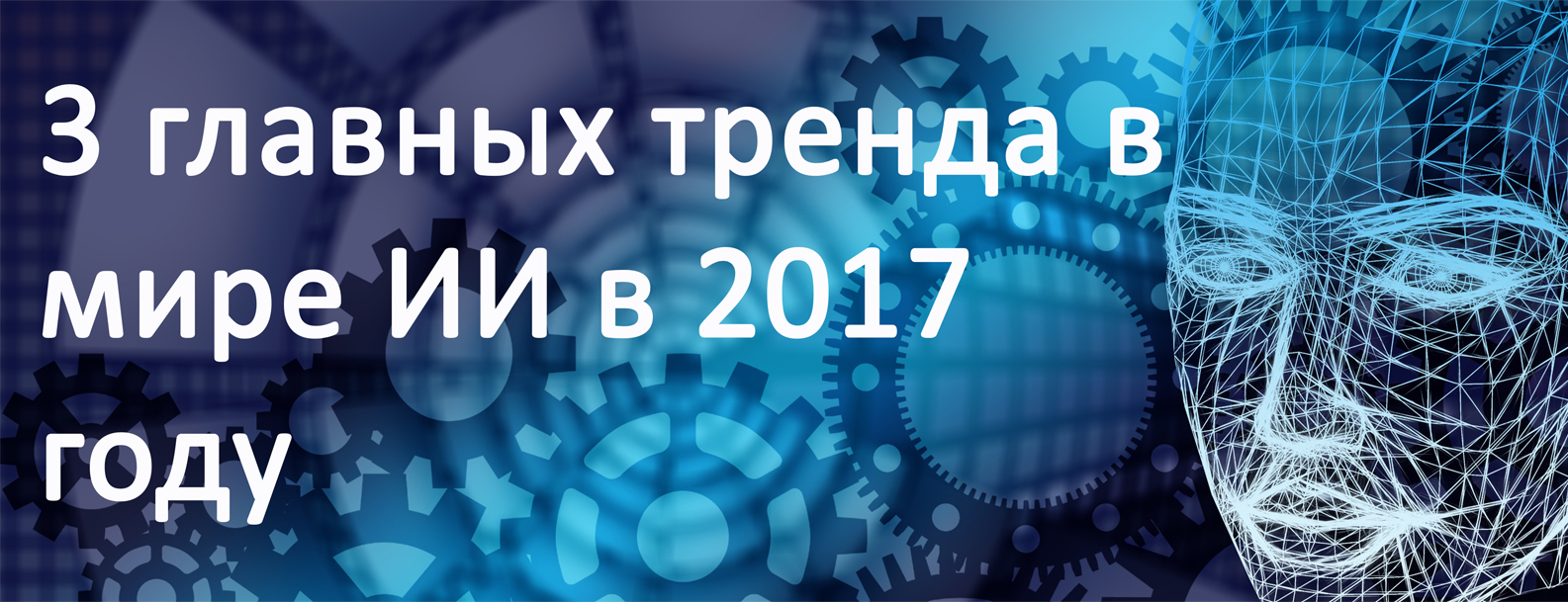3 main trends in the world of AI in 2017

It seems that the whole world (both people and things) is connected to the Internet, and, according to forecasts, by 2020 there will be 6 billion smartphones and 50 billion devices connected to the Internet.
We have already seen impressive experiments on the use of personal information of users to create an individual approach, more optimal use of their time and attract more focused attention. Although satisfaction of needs remains the main currency of the digital economy, simply providing an individual approach to the interests of users is no longer enough, the experience of a person should be more interesting, faster and more contextually acceptable.
')
Thanks to a serious advancement in the development in the field of artificial intelligence (AI) and the training of machines over the past few years, we can already see the possibilities of using AI to improve customer service in other areas of interaction with customers. For example, AI-based chatbots can answer user questions on various topics. AI will be critical in creating an individual approach to users, the next generation approach, and as a guide for users, sellers should use it to achieve success.
Below are the main AI forecasts for the coming year.
1. Help in discovering hidden features and increasing user satisfaction.
Analyzing the total amount of data that is generated daily by various users creates a unique and complex problem that requires modern technology to solve. As the volume and variety of data sources continues to grow, so does the need for developing new ways of analysis, including the development of new algorithms and techniques that improve performance and allow for more in-depth analysis.
AI can take advantage of cloud scaling and unconventional data analysis to process and organize this ever-growing amount of unexpectedly useful information. A machine self-learning device can find deeper mathematical relationships that other systems do not take into account. It can also constantly re-evaluate the results obtained by comparing them with emerging new data in order to ignore the “noise” and draw attention to the really important and new trends. AI can support data analysis to draw our attention to important things - the possibilities for change, including:
• Bridging gaps where users need more services
• Switching resources for efficiency
• Changing processes to meet projected rising demand.
In addition, AI can help businesses relate requests to the user's history, identify trends, and draw attention to new patterns.
2. Identification of emerging patterns and adaptation with anticipation of events.
Predicting the future is difficult, and it seems that there are always unexpected side effects of change. AI can help predict user behavior by conducting a variety of data analysis and evaluating alternatives, and then offering the best way for the organization.
Looking at the accumulated data, AI-based applications can detect “this-then-that” templates that can be used to sort what is happening in your business right now. If you effectively use your own data to sort behaviors, the system can produce predictions based on your organization’s previous actions under the same conditions.
By tracking the results, according to the predictions made, over time, the AI feedback circuit makes the models more sophisticated and reliable. Having the ability to predict alternative behaviors and quickly switch when changing current data, we will get even faster delivery of the product and services to our users in 2017.
3. Accumulation of data for even deeper individual user interaction.
To date, any user ever connected offers a lot of opportunities for companies that want to take another step towards an individual approach to user satisfaction. User satisfaction with context takes the individual approach to the next level, for example, when you know where your client is at the moment and what he is doing, you can correct the message, offer or other information exchange.
Now users have high expectations of a more thoughtful, almost predictive interaction and AI, undoubtedly, will help to realize these expectations. The abundance of available data enables higher performance and better machine learning models, creates new levels of performance and predictability, which ultimately leads to a higher level of user satisfaction.
We expect that in the future, user interaction systems will become as perfect and capable of collaboration as a human being. Imagine, for example, a program that recognizes repetitive mechanical tasks and is included specifically to complete them. Or a program that calibrates various methods, with the help of which you can complete a task, and recommends the most effective method.
→ Source
Source: https://habr.com/ru/post/320424/
All Articles